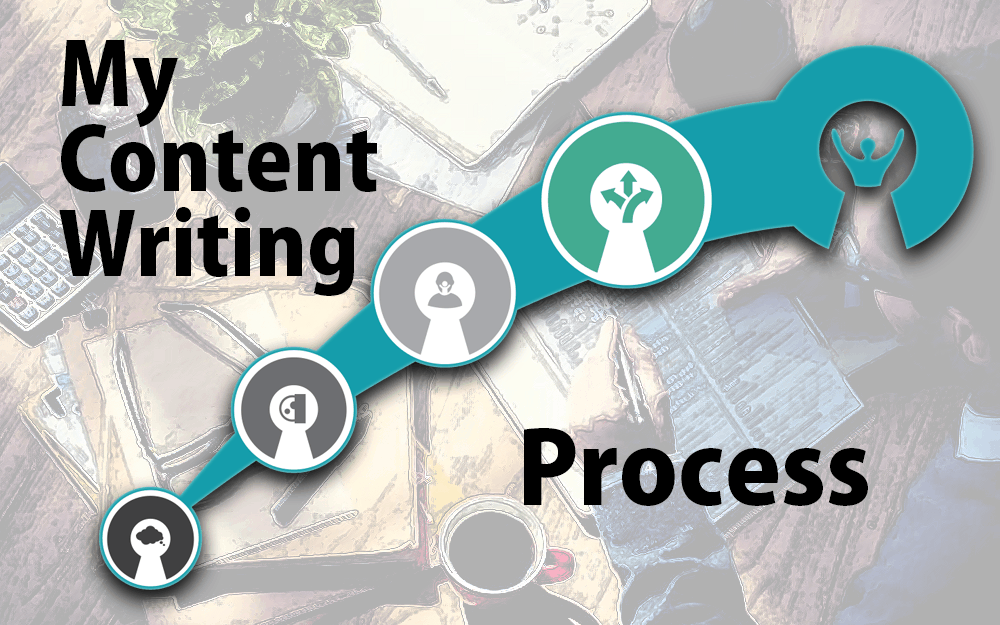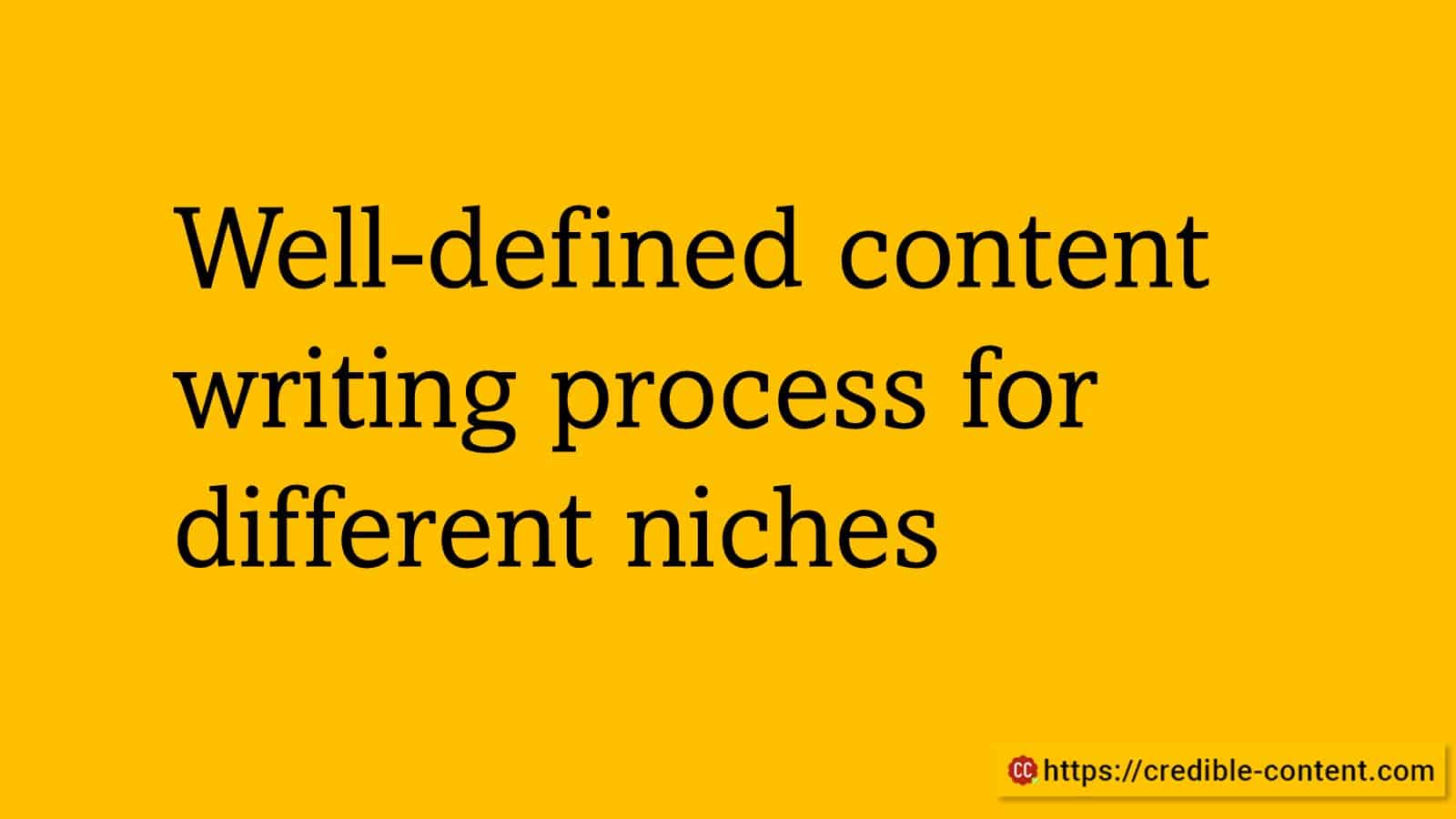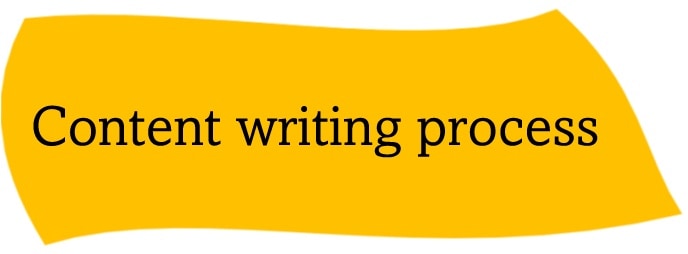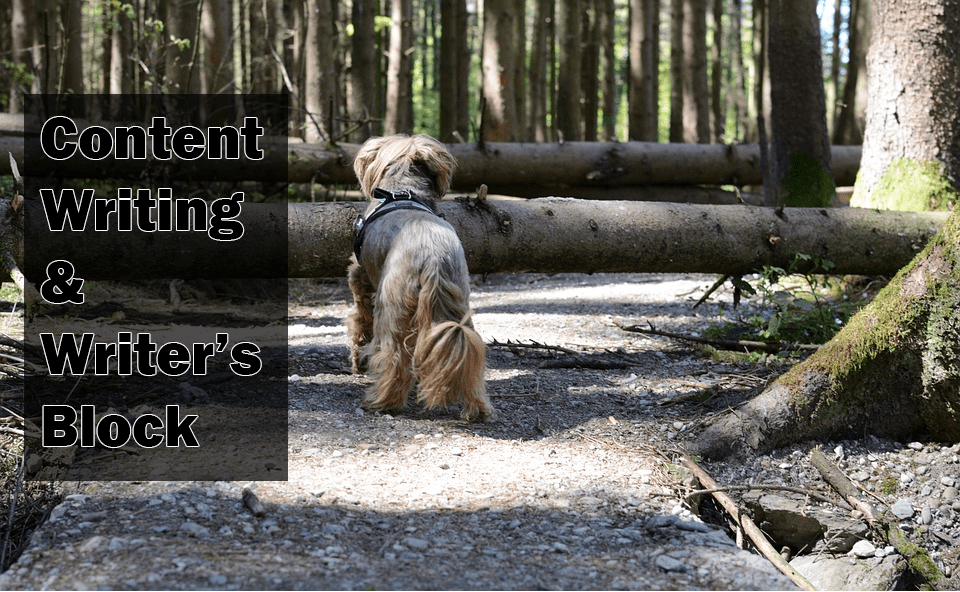
My content writing process
In this blog post I’m going to explain my content writing process for different niches – different industries and segments.
This content writing process is for general reference as well as for clients who want to know what process I will be following when I write content for them.
What exactly do I do to make sure that I use the right language for that particular audience?
Here is the outline of my content writing process:
Many clients who contact me for the first time ask a very valid question, “What makes me a good writer for their niche?”
Also, what is going to be my content writing process?
Someone from a web design company wants to know how I will adapt my content writing for their audience.
Someone from a jewelry design company wants to know the same, and so does someone from a real estate construction company.
At the outset I would like to tell you that I am most comfortable writing on technology.
This is due to 2 facts:
- I have great interest in technology: I read a lot about technology. I firmly believe that it has a strong, positive impact on our society. Personally, since I have cerebral palsy, technology plays a big role in enabling me to earn a living and also make my day-to-day life easier without having to go out.
- Technology businesses understand content marketing better: It’s easier to work with technology companies because they understand the importance of quality content. Since they understand its importance, they also know that they need to pay for the service. Hence, by the time they approach a content writer, they have the budget for it.
Then what enables me to write for other business realms?
Do I follow a special content writing process?

Well-defined content writing process for different niches
I have been writing content since 2004.
I have written content for all major industries and business segments including Internet marketing, web design, software development, surveillance, background check, detective services, high-tech gadgets, home appliances, accessories and apparels, photography, hospitality industry, real estate industry, non-profit, healthcare businesses, emotional and physical well-being, legal counseling and even a rock band.
And there are many categories I cannot recall right now.
Owing to my well-defined content writing process, I can say with confidence that I can count the number of unsatisfied clients on my fingers.
In most of the cases, clients have been satisfied, happy, and whenever they have needed content, they have come back.
For a good writer, for a trained and experienced writer, writing for varied niches isn’t as hard as it may seem in the beginning.
Journalism is a different ball game.
Specialization matters in journalism because you are not just informing people of the latest happenings in your niche, sometimes directly and sometimes indirectly, you are also expressing opinion, and when you express opinion, you need to know lots of other stuff.
But when it comes to content writing for business websites, as long as you have the basic information, a style guide, and writing experience, quality content can be written.
My content writing process

Content writing process explained
Here is the process I follow when writing content for different niches:
Submit content writing samples
Once I receive a query and the client shows interest in my content writing services, I submit appropriate samples.
Over the years I have written for many niches. Most of the times I have a live sample (active links) that I can share with my client.
What happens if I don’t have a sample?
I request the client to give me a topic and I prepare a write up of around 300 words. This is enough to give an idea to the client how I will be writing and how I present my idea.
The sample often gives an insight on my writing style, my presentation, text formatting and research abilities, if needed.
Take an advance for my content writing services
Once the client finds the sample/samples acceptable, I request an advance.
If it is a small project – one blog post, one web page, or one email marketing campaign – I take full advance.
If it is a medium-sized project – 5-10 pieces of content – I take a 50% advance.
For larger projects, I take a commitment money and after that, I may charge every month.
Why I take an advance?
When I start working on a project, I will be committing my time.
I need to make sure that the time that I’m spending, I will be spending on a paid assignment.
Charging an advance also raises stakes on the client side.
They respond faster. They are more committed. There is greater cooperation.
Do background reading
This helps me set the tone.
Different industries have different languages and different styles.
They even have different concerns.
Though, sometimes the budget available for a particular content writing project doesn’t give enough scope for extensive reading, depending on how much payment I’m getting, reading is an essential part of the content writing process.
Reading helps you understand how people write in the industry and how I can write better.
Understand the concerns of the end customers and clients
Content writing is basically for end customers and clients.
If you are a web design company and if I’m writing for you, I’m writing for your clients.
They should be able to understand how they will benefit if they hire your web design services.
A content writing process is not complete without understanding the needs of the end customers and clients.
Similarly, if you are a jewelry seller and I write for you, I will write keeping in mind the needs and desires of your customers who will buy jewelry from you after reading your content.
Make a list of primary and secondary keywords
Keywords are not just for SEO.
They also help you write for the target audience using the language the target audience prefers.
When you have a list of primary and longtail keywords, it gives you an idea of what terms to focus on while writing content.
Of course, using primary and secondary keywords is also good for your SEO.
Write the first draft of the first document
I first create the outline.
Crafting an outline is important if a document is long: 1500-2000 words.
Otherwise everything goes haywire.
I write all the subheadings first.
I make a list of all the important points that I would like to cover.
I also write phrases and expressions that my client doesn’t want me to miss in the document.
Since the first document sets the tone and also gives an idea to the client how I’m going to approach the project, a lot depends on the first document.
I prepare the first draft and send it to the client for approval. This is where the core part of the content writing process kicks in.
The client can suggest changes and I try to incorporate those changes as soon as possible so that the main project can be kickstarted.
After evaluating the first document, the client can also decide whether he or she would like to continue with me or explore other options.
Submit the document for review
The review of the first document is one of the most important parts of my content writing process.
The review of the first document sets the tone of the remaining documents.
It is very important for the client to properly go through the first draft and suggest revisions, if any.
Based on the suggestions made by the client, I revise the document.
I move forward only when the first document is approved by the client and he or she is satisfied.
Work on the remaining documents
While working on the first document I gather as much information as possible about the project.
Once the client is happy and satisfied with the first document, I proceed with other documents.
Most of the clients prefer to get the documents as they are completed so that in case there is some problem, it can be sorted out.
I also prefer this because then psychologically, I’m always on my toes and I don’t leave all the documents to the last couple of days.
Concluding remarks on my content writing process
Ultimately, it rests on the client whether he or she wants to work with me or not, whatever is my content writing process.
Sometimes, I can quickly make out whether I myself want to work on a project or not and I communicate this to the client.
Fortunately, most of the serious clients (clients who convert and eagerly pay) have already gone through my samples.
They have also gone through my website and my blog.
They are convinced that I can write for them even if initially they think I need to educate myself about their business, which I obviously do.





